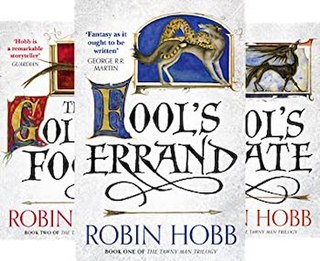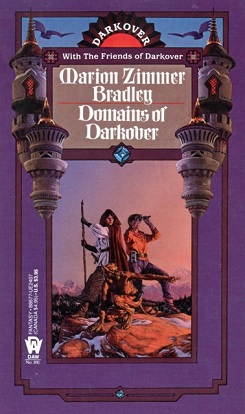
Lilith, also spelt Lilit, Lilitu, or Lilis, is a female figure in Mesopotamian and Judaic mythology, theorized to be the first wife of Adam and supposedly the primordial she-demon. Lilith is cited as having been "banished" from the Garden of Eden for not complying with and obeying Adam. She is thought to be mentioned in Biblical Hebrew in the Book of Isaiah, and in Late Antiquity in Mandaean mythology and Jewish mythology sources from 500 CE onward. Lilith appears in historiolas in various concepts and localities that give partial descriptions of her. She is mentioned in the Babylonian Talmud, in the Book of Adam and Eve as Adam's first wife, and in the Zohar Leviticus 19a as "a hot fiery female who first cohabited with man". Many traditional rabbinic authorities, including Maimonides and Menachem Meiri, reject the existence of Lilith.

Thaddeus Maxim Eugene (Ted) Dikty was an American editor who also played a role as one of the earliest science fiction anthologists, and as a publisher.

Fantasy literature is literature set in an imaginary universe, often but not always without any locations, events, or people from the real world. Magic, the supernatural and magical creatures are common in many of these imaginary worlds. Fantasy literature may be directed at both children and adults.
Phantastes: A Faerie Romance for Men and Women is a fantasy novel by Scottish writer George MacDonald, first published in London in 1858. It was later reprinted in paperback by Ballantine Books as the fourteenth volume of the Ballantine Adult Fantasy series in April 1970.

The Tawny Man trilogy is a series of novels by American author Robin Hobb, and the third trilogy in the Realm of the Elderlings sequence. Narrated in first person by FitzChivalry Farseer, it follows his life in his mid-thirties, and is set after the events of the Farseer Trilogy and the Liveship Traders.

Elements of the supernatural and the fantastic were an element of literature from its beginning. The modern genre is distinguished from tales and folklore which contain fantastic elements, first by the acknowledged fictitious nature of the work, and second by the naming of an author. Works in which the marvels were not necessarily believed, or only half-believed, such as the European romances of chivalry and the tales of the Arabian Nights, slowly evolved into works with such traits. Authors like George MacDonald (1824–1905) created the first explicitly fantastic works.

Lud-in-the-Mist (1926) is the third and final novel by British writer Hope Mirrlees. It continues the author's exploration of the themes of Life and Art, by a method already described in the preface of her first novel, Madeleine: One of Love's Jansenists (1919): "to turn from time to time upon the action the fantastic limelight of eternity, with a sudden effect of unreality and the hint of a world within a world".
Joy Chant is a British fantasy writer. She is best known for the three House of Kendreth novels, published 1970 to 1983. Her legal name is Eileen Joyce Rutter.

The Charwoman's Shadow is a 1926 fantasy novel by Anglo-Irish writer Lord Dunsany. It is among the pioneering works in the field, published before the genre was named "fantasy".

The Shaving of Shagpat: An Arabian Entertainment is a fantasy novel by English writer George Meredith. It was first published in hardcover by Chapman and Hall in 1856, and there have been numerous editions since. Its importance in the history of fantasy literature was recognized by its reissuing by Ballantine Books as the seventeenth volume of the Ballantine Adult Fantasy series in July 1970. The Ballantine edition includes an introduction by Lin Carter.

The English Assassin: A Romance of Entropy is a 1972 novel by British fantasy and science fiction writer Michael Moorcock, first published in the UK by Allison & Busby and in the US by Harper & Row. Subtitled "A romance of entropy" it was the third part of his long-running Jerry Cornelius series.

The Best Science Fiction Stories: 1950 is a 1950 anthology of science fiction short stories edited by Everett F. Bleiler and T. E. Dikty. An abridged edition was published in the UK by Grayson in 1951 under the title The Best Science Fiction Stories. The stories had originally appeared in 1949 in the magazines Astounding, The Saturday Evening Post, Fantasy and Science Fiction, Fantastic Adventures, Maclean’s, Thrilling Wonder Stories, Blue Book and Startling Stories. The anthology was later combined with the 1949 volume and reissued as Science Fiction Omnibus.

The Best Science Fiction Stories: 1953 is a 1953 anthology of science fiction short stories edited by Everett F. Bleiler and T. E. Dikty. An abridged edition was published in the UK by Grayson in 1955 under the title The Best Science Fiction Stories: Fourth Series. The stories had originally appeared in 1952 in the magazines Fantasy and Science Fiction, Thrilling Wonder Stories, Galaxy Science Fiction and Astounding.

Triplanetary is a science fiction novel and space opera by American writer E. E. Smith. It was first serialized in the magazine Amazing Stories in 1934. After the original four novels of the Lensman series were published, Smith expanded and reworked Triplanetary into the first of two prequels for the series. The fix-up novel Triplanetary was published in book form in 1948 by Fantasy Press. The second prequel, First Lensman, was a new original novel published in 1950 by Fantasy Press.

The Moon Is Hell! is a collection of two stories, one science fiction, the other sword and sorcery, by American writer John W. Campbell Jr. It was published in 1951 by Fantasy Press in an edition of 4,206 copies. The title story, published for the first time in this collection, deals with a team of scientists stranded on the Moon when their spacecraft crashes, and how they use their combined skills and knowledge to survive until rescue, including building shelter from meteor showers, and creating their own oxygen from Lunar rock. The second story, "The Elder Gods", Campbell rewrote, on a short deadline, from a story by Arthur J. Burks purchased for Unknown but later deemed unsatisfactory. It originally appeared in the October 1939 issue of Unknown under the pseudonym Don A. Stuart. The title of the eponymous story is occasionally found without the exclamation point, but the punctuation is used for the title of most editions of the collection itself.

The Black Star Passes is a fixup of science fiction short stories by American author John W. Campbell Jr. It was first published in 1953 by Fantasy Press in an edition of 2,951 copies. The book is the first in Campbell's Arcot, Morey and Wade series, and is followed by the novels Islands of Space and Invaders from the Infinite. The stories originally appeared in the magazines Amazing Stories and Amazing Stories Quarterly, and were "extensively edited" for book publication, with Campbell's approval, by Lloyd Arthur Eshbach.

The Early Fears is a collection of fantasy and horror short stories by American writer Robert Bloch. It was released in 1994 by Fedogan & Bremer in an edition of 2,400 copies, of which 100 were signed by the author. The collection reprints the stories from Bloch's two earlier collections published by Arkham House, The Opener of the Way and Pleasant Dreams: Nightmares with three additional stories. The stories originally appeared in the magazines Unknown, Weird Tales, Amazing Stories, Strange Stories, Fantasy and Science Fiction, Beyond Fantasy Fiction, Fantastic, Imagination and Swank. The collection includes Bloch's 1959 Hugo Award winning story, "That Hell-Bound Train."

Domains of Darkover is an anthology of fantasy and science fiction short stories edited by Marion Zimmer Bradley. The stories are set in Bradley's world of Darkover. The book was first published by DAW Books in March 1990.

The High Place is a 1923 fantasy novel by James Branch Cabell, first published in hardcover by Robert M. McBride in an edition illustrated by Frank C. Pape. It is the eighth volume in the Storisende edition of Cabell's Biography of the Life of Manuel. The High Place is a satirical sequel to the Sleeping Beauty tales, depicting a marriage where the "happily ever after" coda has gone far awry.

"...and some were human." is the first story collection by science fiction writer Lester del Rey, originally published in hardcover by Prime Press in 1948 in an edition of 3,050 copies if which 50 were specially bound, slipcased and signed by the author. The stories first appeared in Astounding and Unknown. An abridged paperback edition, including only eight of the twelve stories, was issued by Ballantine Books in 1961. A Spanish translation, reportedly dropping only one story, appeared in 1957.

















